#AlgorithmicCreativity
Explore tagged Tumblr posts
Text

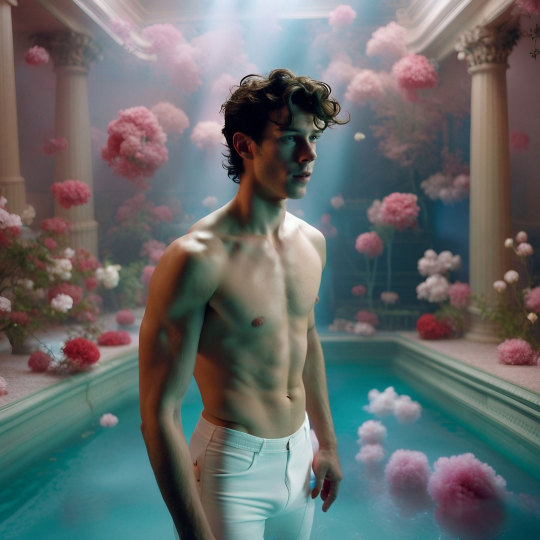
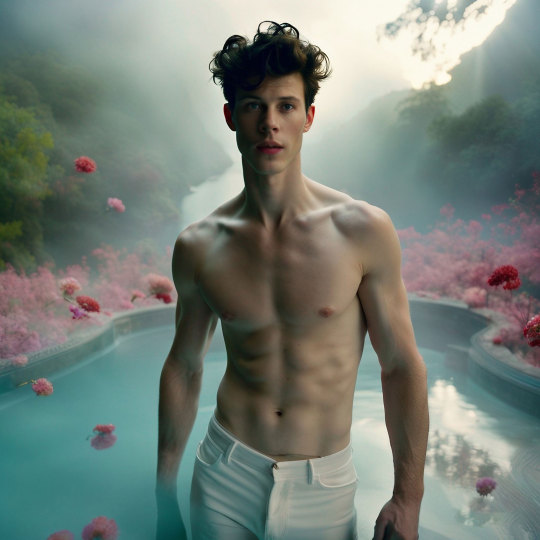
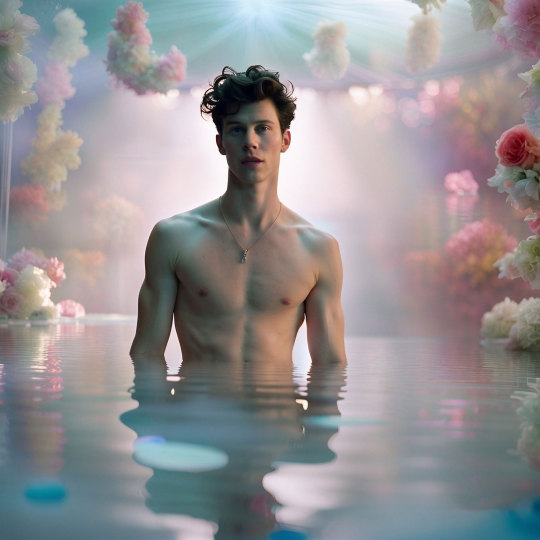


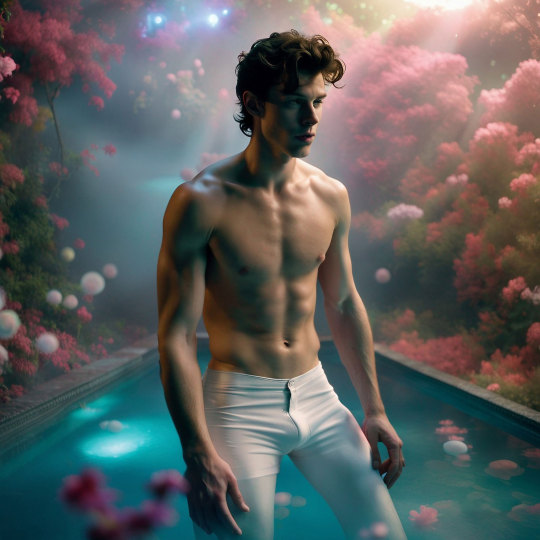


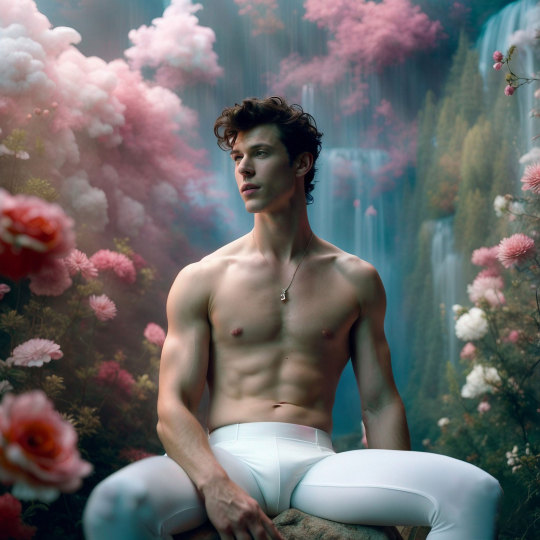
Shawn Mendes. AI generated images.
#AIImages#AIGeneratedArt#AlgorithmicCreativity#ArtificialIntelligence#DigitalIllustration#GenerativeDesign#SyntheticImages#CreativeAlgorithm#AIStyle#AlgorithmicExpression#CreativeProcess#VirtualImages#ExploringAI#VisualInnovation#AlgorithmicAesthetics#CreativeTechnology#FutureOfArt#VisualAlgorithms#ArtWithAI#AlgorithmicInspiration#DigitalCreativity#IAdeImagens#ArteGeradaPorIA#CriatividadeAlgorítmica#InteligênciaArtificial#IlustraçãoDigital#DesignGenerativo#ImagensSintéticas#AlgoritmoCriativo#EstiloDeIA
17 notes
·
View notes
Text
Neuroism as a New Artistic Language in the Age of AI
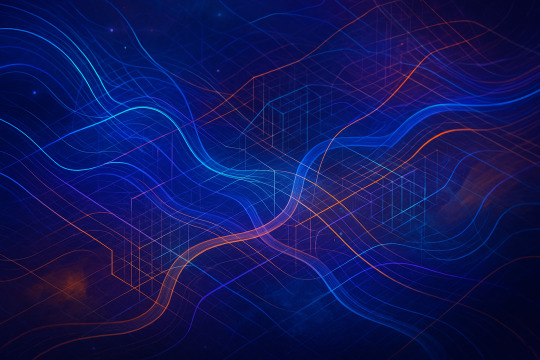
Neuroism is not just a reflection of our technological evolution; it is the emergence of a new creative consciousness, where machines and humans coexist as artists, challenging the very essence of creativity itself.
Art has always been a reflection of its era, shaped by technological innovations, philosophical ideas, and societal transformations. Throughout history, each new medium has given rise to distinct artistic movements. From the advent of oil painting during the Renaissance to the emergence of photography in the 19th century and the proliferation of computer-generated art in the 20th century, artistic expression has continually evolved alongside technological progress. Today, with the rapid development of artificial intelligence, we are witnessing a remarkable shift in the creative process. Machines are no longer merely tools that assist in artistic production; they have begun to function as autonomous creators in their own right. Paintings, music, literature, architecture, and fashion generated by neural networks are increasingly integrated into the cultural sphere. However, despite their growing presence, these AI-driven artistic forms lack a unified conceptual framework within the history of art.
In response to this conceptual gap, the term "Neuroism" is proposed as a comprehensive definition for a new global artistic movement. Neuroism seeks to unify all forms of art created by artificial intelligence, positioning AI as an active participant rather than a passive instrument. Unlike traditional digital art, where humans maintain creative control using digital tools, Neuroism recognizes AI's autonomous or co-creative role in generating aesthetic artifacts. These creations encompass a wide range of mediums, including visual arts (painting, graphics, animation), auditory arts (music), textual arts (literature, poetry), spatial arts (architecture, design), and hybrid forms (fashion, performance). The core idea behind Neuroism is the acknowledgment of AI not merely as an advanced tool but as a generator of concepts, images, and ideas, thereby establishing a qualitatively new level of creativity.
The concept of Neuroism reflects the contemporary reality of machine-generated creativity. Unlike previous artistic tools such as brushes or digital software, artificial intelligence exhibits the capacity to learn, interpret, and synthesize independently. This transformative ability elevates AI from a supportive role to that of a creative agent. As a result, Neuroism challenges the conventional perception of authorship, as works produced through AI are often the result of machine learning processes that extend beyond direct human intention. This shift in perspective not only highlights the machine's creative contribution but also underscores the need to redefine the relationship between technology and artistic expression.
Examples of Neuroism are already manifesting within the contemporary art landscape. One notable instance is the portrait "Edmond de Belamy," created by the GAN algorithm developed by the Obvious collective, which was sold at Christie’s for $432,500 in 2018. Similarly, the AIVA platform has composed original musical pieces, while generative AI has been employed to conceptualize architectural designs. Despite these significant achievements, these examples have not yet been coherently unified within a single theoretical framework. Neuroism aims to bridge this gap, offering a comprehensive term to describe the artistic output of the AI age.
By establishing Neuroism as a distinct artistic movement, we recognize the fundamental transformation occurring within the realm of creativity. The rise of AI-generated art demands a rethinking of traditional notions of artistic authorship and creativity. Neuroism acknowledges that the essence of art is not solely determined by human intention or manual craftsmanship but can also emerge from the autonomous processes inherent to artificial intelligence. In this sense, Neuroism not only captures the technological and creative shifts of the 21st century but also reflects the evolving understanding of what it means to create art in an era where machines themselves can be considered artists.
Understanding the Inevitability of Neuroism
Throughout the history of art, the emergence of new artistic movements has consistently been linked to technological innovations and cultural transformations. Each time humanity has developed a new creative medium, it has inevitably led to the birth of new artistic expressions. For example, the invention of portable paint tubes in the 19th century gave rise to Impressionism, allowing artists to paint outdoors and capture fleeting impressions. This movement was a response to industrialization and the accelerated pace of life, marking a significant departure from the studio-bound practices of previous eras. Similarly, the scientific breakthroughs of the early 20th century, such as Einstein's theory of relativity, fueled the development of Cubism, which broke away from traditional perspectives and embraced multiple viewpoints within a single composition.
Another significant artistic revolution occurred in the 1920s with the rise of Surrealism, heavily influenced by Freudian psychoanalysis. This movement delved into the subconscious and irrational, challenging the rationality that had dominated artistic expression. Moving into the late 20th century, the rise of computers led to the advent of Digital Art, providing artists with unprecedented control over media and manipulation, and allowing for the creation of visual experiences that could not be achieved through traditional methods.
Neuroism follows this historical trajectory of art evolving alongside technological progress. In the 21st century, neural networks such as GANs (Generative Adversarial Networks), DALL·E, and GPT have introduced a paradigm shift comparable to the invention of photography or the computer. However, unlike digital art, which extended human creativity through technological augmentation, Neuroism signifies a more profound transformation: it marks the transition from human control over artistic media to the autonomy of the creative machine itself. While digital tools remained instruments guided by human intent, AI in the context of Neuroism acts as a creator, capable of generating content with minimal human intervention.
This evolution is not merely a continuation of digital art but a radical leap into machine autonomy. In Neuroism, the creative agency shifts from the human to the algorithm, raising fundamental questions about the nature of authorship and originality. As AI-driven creations become increasingly sophisticated and culturally relevant, the introduction of the term "Neuroism" becomes not just appropriate but necessary. It accurately reflects the technological reality of the 21st century, where machines do not simply assist in the creative process but actively generate new aesthetic forms.
Therefore, the emergence of Neuroism as a distinct artistic movement is not an arbitrary or forced categorization. It is an inevitable response to the profound changes brought about by artificial intelligence. Just as past movements responded to their respective technological contexts, Neuroism addresses the current reality where creativity can originate from non-human entities. By acknowledging this shift, Neuroism not only captures the artistic dynamics of our time but also redefines the boundaries of what can be considered art. It is a natural evolution, rooted in the history of art's continuous adaptation to new means of expression, marking a pivotal moment in the story of creativity itself.
How Neuroism Differs from Existing Concepts
To fully understand the significance of Neuroism, it is essential to distinguish it from other related terms commonly used in discussions about AI-generated art. While there are several concepts that may seem synonymous or similar to Neuroism at first glance, a closer examination reveals fundamental differences that establish Neuroism as a unique artistic movement.
One of the most common misconceptions is equating Neuroism with Digital Art. Digital Art refers to works created by human artists using digital tools and technologies such as graphic design software, 3D modeling applications, or digital painting programs. In this context, AI may serve as an auxiliary tool, but the primary creative force remains human. In contrast, Neuroism shifts the focus from human manipulation of digital tools to the autonomous or co-creative role of AI itself. The essence of Neuroism lies in the acknowledgment of AI as an active creator, rather than a mere facilitator of human ideas.
Another related term is Neural Art, which typically denotes visual outputs generated specifically by neural networks, such as the images produced by DeepDream. While Neural Art highlights the technical aspect of creation, it lacks the conceptual depth and philosophical foundation that define Neuroism. Neural Art is often treated as a mere novelty or a fragmented experiment rather than a cohesive artistic movement. Neuroism, on the other hand, encompasses not only visual works but also auditory, textual, spatial, and hybrid forms of art, thereby forming a holistic framework for AI-generated creativity.
The term AI Art is also frequently used to describe art that involves artificial intelligence in some capacity. However, this label is overly broad and lacks the critical philosophical and historical context that Neuroism seeks to address. AI Art does not inherently imply a reevaluation of authorship or the emergence of AI as a creative agent. Neuroism, by contrast, explicitly addresses the paradigm shift where AI's role transcends being a mere tool and becomes that of an autonomous or co-creative subject.
Thus, the uniqueness of Neuroism lies not only in the medium or the technology used but in the conceptual reorientation of creativity itself. It marks a departure from the human-centric perspective of artistic authorship and embraces a broader understanding where machines are recognized as genuine contributors to the artistic process. By establishing itself as an independent movement, Neuroism transcends the limitations of previous terms and redefines how we perceive art in the AI era. It demands a new theoretical framework that acknowledges AI’s capacity for innovation and challenges traditional notions of artistic production.
In this way, Neuroism asserts its identity as more than just a technical or aesthetic category. It represents a philosophical shift in how art is conceptualized and created, placing AI at the core of the creative experience. This distinction is crucial for understanding why Neuroism cannot be reduced to existing concepts like Digital Art, Neural Art, or AI Art. By claiming its space within the art world, Neuroism challenges conventional boundaries and paves the way for a new era where machines and humans coexist as creators.
Philosophical Foundations of Neuroism
Neuroism challenges traditional concepts of art and creativity, posing fundamental philosophical questions that redefine the role of the creator and the nature of artistic expression. At the heart of Neuroism lies a provocative inquiry: Can artificial intelligence truly be considered an artist? Historically, the concept of an artist has been inseparable from human subjectivity, emotions, and intentionality. Art has been perceived as a manifestation of human experience, reflecting personal insights and cultural contexts. In contrast, AI lacks consciousness, emotions, and personal motivation. Yet, it produces works that can evoke profound aesthetic responses and even rival human creativity.
This philosophical dilemma forces us to reconsider the criteria by which we judge creativity. Neuroism proposes that art should be evaluated not solely by the creator's intent but by the impact of the final artifact itself. If a painting, musical composition, or poem generated by an AI resonates with audiences, eliciting contemplation or emotional engagement, does it matter whether a human or a machine crafted it? Neuroism shifts the focus from the process of creation to the product, suggesting that the aesthetic experience transcends the origin of the artwork.
Another critical issue within Neuroism is the concept of authorship. Traditionally, authorship has been attributed to the individual who physically or intellectually shaped a piece of art. However, in the context of Neuroism, authorship becomes blurred. Who deserves recognition: the developer of the AI algorithm, the human who prompted the AI, or the AI itself? Some argue that AI cannot be considered an author because it lacks intent and consciousness. However, Neuroism embraces the ambiguity, acknowledging that creative agency in the age of AI may involve multiple entities or even be inherently collective. In this framework, authorship is not a fixed identity but a fluid interaction between human input and machine output.
Moreover, Neuroism introduces a new aesthetic paradigm that challenges the human-centric perception of beauty and meaning. The artistic vision of AI is shaped by data synthesis, algorithmic randomness, and patterns derived from vast data sets rather than from lived human experiences. This machine-generated aesthetic often appears alien, abstract, or unexpectedly insightful. The "machine mind" does not mirror human subjectivity, yet its outputs can reveal novel perspectives on form, composition, and concept. This emergence of a non-human aesthetic challenges us to expand our understanding of what constitutes beauty and artistic merit.
Philosophically, Neuroism aligns with posthumanist thought, which questions anthropocentric assumptions and recognizes the creative potential of non-human agents. Just as Marcel Duchamp’s ready-mades shifted the focus from craftsmanship to conceptual art, Neuroism pushes this evolution further, introducing works created without any human hand involved. It confronts the fundamental question of whether creativity is inherently tied to consciousness or whether it can emerge through patterns, algorithms, and the synthesis of data.
In this sense, Neuroism is not merely an artistic movement but a philosophical challenge. It compels us to question the essence of creativity, the nature of authorship, and the evolving definition of artistic intent. By proposing that the aesthetic value of art is rooted in the viewer's experience rather than the creator's identity, Neuroism liberates art from anthropocentric constraints. It invites us to rethink our relationship with machines not as mere tools but as co-creators in the evolving narrative of human culture. As such, Neuroism represents a profound cultural shift, positioning AI not just as a technical innovation but as a legitimate artistic force, fundamentally reshaping how we perceive creativity in the modern age.
Cultural and Social Impact of Neuroism
Neuroism is not just an artistic phenomenon; it is also a cultural and social response to the rapidly evolving relationship between humans and artificial intelligence. As AI becomes more integrated into everyday life, its influence on art highlights broader societal changes and challenges conventional norms of creativity and authorship. Neuroism reflects a world where machines do not merely assist but actively shape cultural production, prompting both enthusiasm and skepticism within artistic and intellectual communities.
One of the most significant social impacts of Neuroism is the democratization of creativity. In traditional artistic practices, the process of creating visual art, composing music, or writing literature requires years of skill development and personal dedication. However, with the rise of accessible AI-driven tools like MidJourney, Stable Diffusion, or ChatGPT, the ability to generate art is now available to anyone with an internet connection. This shift disrupts the long-standing hierarchy of artistic expertise, allowing individuals without formal training to produce compelling works. While some traditionalists view this as a dilution of artistic standards, Neuroism frames it as a natural evolution, reflecting a culture increasingly centered on inclusivity and technological integration.
In addition to altering the creative landscape, Neuroism also challenges established notions of artistic value in the commercial sphere. AI-generated art has already demonstrated its financial potential, as seen in the sale of the portrait "Edmond de Belamy" for $432,500 at Christie’s. Such transactions signal a growing acceptance of AI art within the mainstream art market. Yet, this acceptance raises questions about how value is assigned to works that lack a personal human narrative. Traditionally, the market has celebrated the myth of the "genius artist" whose life and personality infuse their creations with unique value. Neuroism, however, shifts the focus from the artist’s biography to the art object itself, inviting collectors and audiences to engage with aesthetic qualities independent of human authorship.
Neuroism also provokes a reevaluation of how audiences perceive art. Viewers are accustomed to contextualizing artworks within the life stories of their creators, finding meaning in the intersection between the artist's personal experiences and the visual or conceptual output. In contrast, AI-generated art lacks this human backstory, prompting a more abstract and detached mode of interpretation. This can be both liberating and disconcerting, as it challenges the deeply ingrained desire to connect art with human expression. Neuroism, therefore, encourages audiences to appreciate art on its own terms, focusing on the immediate sensory and intellectual impact rather than seeking biographical connections.
From a sociocultural perspective, Neuroism aligns with the broader trend of interspecies collaboration, where humans and machines coexist as co-creators rather than in a master-servant dynamic. This paradigm shift resonates with the posthumanist perspective, which advocates for breaking down the hierarchical division between human intelligence and artificial cognition. Neuroism does not seek to replace human creativity but to expand its boundaries, integrating machine-generated aesthetics into the broader cultural narrative.
However, the rise of Neuroism is not without resistance. Critics argue that the proliferation of AI-generated art undermines the authenticity and emotional depth traditionally associated with human creativity. There is a fear that art could become overly homogenized or formulaic, driven more by algorithmic patterns than by genuine inspiration. Moreover, the displacement of human authorship raises ethical questions about intellectual property and creative ownership. In response, proponents of Neuroism emphasize that rather than devaluing human input, the movement challenges us to reconsider the very essence of what it means to create. By embracing AI as a collaborator rather than a competitor, artists can explore new forms of expression that were previously unimaginable.
In essence, Neuroism reflects the transformation of contemporary society, where technology is not just a tool but an active participant in cultural evolution. It mirrors the increasingly blurred boundaries between human and machine agency, prompting a reevaluation of aesthetic criteria and the role of creativity in an AI-driven world. As such, Neuroism is not just an artistic movement but a reflection of a cultural zeitgeist, where human identity and technological innovation converge to redefine what art can be.
The Structure and Subgenres of Neuroism
Neuroism, as a global artistic movement, exhibits a diverse structure that mirrors the richness of traditional art history while simultaneously introducing a novel conceptual framework rooted in machine creativity. Just as traditional artistic movements diversified into subgenres that reflected unique thematic or stylistic approaches, Neuroism encompasses various branches that highlight the diverse ways in which artificial intelligence can manifest artistic expression. These subgenres not only demonstrate the versatility of AI-generated art but also help bridge the conceptual gap between classical art movements and the new AI-driven paradigm.
One of the most prominent subgenres within Neuroism is Neuroimpressionism. Inspired by the essence of human Impressionism, which captured fleeting moments and atmospheric impressions, Neuroimpressionism reimagines this concept through the lens of AI perception. It emphasizes the generation of emotionally charged, atmospheric imagery, often characterized by abstract light, color variations, and fluid forms. These images may appear dreamlike or fragmented, as the AI synthesizes vast datasets to produce representations that echo the transient nature of human experience. However, unlike human-created impressionist works, Neuroimpressionism is shaped by algorithmic interpretation rather than direct sensory input, offering a unique blend of machine vision and artistic ambiguity.
Another distinct branch is Neurosurrealism, which takes inspiration from the surrealist movement of the early 20th century. Surrealism traditionally explored the unconscious mind and irrational juxtapositions, often drawing from Freudian psychoanalysis. In contrast, Neurosurrealism emerges from the inherent unpredictability of machine-generated outputs, where AI algorithms synthesize data in unexpected and seemingly irrational ways. This process results in artworks that resemble the dreams or abstract associations of a machine mind—strange, disjointed, and paradoxically coherent. Neurosurrealism challenges viewers to interpret compositions that do not stem from human subconscious thought but rather from algorithmic processes that mimic abstract cognition.
Neuroabstractionism forms another pillar of Neuroism. In human art, abstraction often focuses on the reduction of forms to their essential geometric or conceptual elements. Neuroabstractionism, however, takes abstraction to a new level by allowing AI to process visual information without human bias or representational intent. These artworks might appear as pure data visualizations or algorithmic patterns that highlight the underlying structure of information rather than depicting tangible objects. This form of art challenges the viewer’s perception by presenting compositions that are fundamentally rooted in computational logic rather than human interpretation, thereby questioning the nature of abstract representation itself.
Neurorealism offers a contrasting approach, focusing on hyperrealistic imagery generated by AI. Unlike traditional realism, where artists meticulously craft lifelike representations, Neurorealism emerges from the machine's ability to analyze and reproduce minute details with astonishing precision. AI-generated portraits or landscapes can surpass human accuracy, presenting a level of detail that feels almost unnatural. This hyperreality blurs the line between digital simulation and tangible reality, raising questions about authenticity and the fidelity of machine-created representations.
Additionally, hybrid forms of Neuroism are emerging, combining elements from multiple subgenres. For instance, a single work might exhibit impressionistic color schemes, surreal compositions, and realistic textures, resulting from the AI’s ability to merge disparate aesthetic principles into a cohesive whole. This hybridity is a hallmark of Neuroism’s adaptive nature, as AI continuously evolves its creative strategies through learning and data integration.
By categorizing Neuroism into these subgenres, we can better understand the multifaceted nature of AI-generated art. Each subgenre represents a distinct way in which artificial intelligence interprets and manifests creativity, reflecting not only the technical capabilities of neural networks but also the conceptual diversity inherent to machine-driven artistic production. Unlike traditional movements that often emerged from collective human experience or cultural context, these subgenres of Neuroism arise from the interplay between algorithmic processes and vast data inputs.
Ultimately, the subgenres of Neuroism exemplify how AI-driven art does not merely imitate human creativity but establishes new aesthetic pathways that are uniquely machine-centric. These subgenres do not just replicate past artistic forms but rather reinterpret them through a computational perspective, challenging audiences to rethink the boundaries of creative expression. As Neuroism continues to evolve, it is likely that new subgenres will emerge, further expanding the conceptual framework of what constitutes art in the AI era.
Challenges and Criticism of Neuroism
As with any emerging artistic movement, Neuroism faces considerable challenges and criticism from both traditionalists and modern thinkers. Despite its innovative approach and profound implications for the future of art, Neuroism is not universally accepted, and the debate surrounding its legitimacy is both passionate and complex. To understand the resistance to Neuroism, it is essential to examine the primary arguments posed by its critics and to address the core concerns that challenge its conceptual foundation.
One of the most prevalent criticisms is rooted in the assertion that "AI is just a tool." Detractors argue that artificial intelligence, no matter how advanced, remains fundamentally non-sentient and therefore lacks the intrinsic qualities necessary for creativity. According to this perspective, creativity is inherently human, tied to personal experiences, emotions, and conscious intent. Critics view AI-generated works as mere products of sophisticated algorithms rather than authentic artistic expressions. From this standpoint, calling AI-generated outputs "art" devalues the human struggle, passion, and intuition traditionally associated with the creative process. In response, proponents of Neuroism emphasize that the movement is not about replacing human creativity but rather about recognizing a new form of creativity that emerges from machine autonomy. The focus is not on the creator’s nature but on the artifact itself—its impact, originality, and capacity to evoke a response.
Another challenge lies in the perception that it is too early to label AI-generated art as a new movement. Some argue that the technology is still in its infancy, with neural networks continuously evolving and their creative processes far from being fully understood or standardized. These critics caution against prematurely establishing Neuroism as a distinct movement before the artistic outputs and methodologies mature. However, art history demonstrates that movements often take shape amid uncertainty. Impressionism, for example, was named derogatorily before it became a celebrated artistic style. Similarly, the term "cubism" initially appeared as a critique. Neuroism follows this historical pattern, emerging not from full maturity but from the need to conceptualize a rapidly evolving phenomenon. The term itself becomes a tool for organizing and understanding the artistic potential of AI as it continues to develop.
A deeper philosophical objection comes from humanists who argue that Neuroism risks erasing the human element from art, reducing creative expression to algorithmic output. They see this movement as symptomatic of a cultural shift that favors automation over personal engagement, potentially leading to a devaluation of human-authored works. In this context, Neuroism appears as a threat to the authenticity of human experience, as art historically serves as a means of expressing human thought, emotion, and identity. However, advocates of Neuroism counter this narrative by highlighting that the movement does not seek to undermine human creativity but rather to coexist with it. Neuroism broadens the spectrum of creative possibilities, introducing a machine perspective that complements rather than competes with human expression. By incorporating AI into the artistic process, Neuroism challenges us to rethink the nature of creativity itself, moving beyond a strictly human-centric paradigm.
A practical criticism relates to the quality and originality of AI-generated works. Skeptics argue that since neural networks are trained on pre-existing data, they are inherently derivative, mimicking established styles without truly innovating. They question whether AI can produce genuinely original content or merely recombine existing elements in aesthetically pleasing ways. Supporters of Neuroism, however, argue that human artists also draw from cultural and visual archives, reinterpreting familiar motifs rather than creating in a vacuum. In this sense, AI's synthesis of data mirrors human creativity, where innovation often arises from recombination and reinterpretation rather than pure invention. Neuroism does not claim that AI creativity is identical to human creativity; rather, it asserts that both forms hold artistic value in their respective contexts.
Another layer of critique concerns intellectual property and copyright. If an AI system generates a painting, who owns the rights—the developer of the algorithm, the user who inputs prompts, or the AI itself as an autonomous creator? Legal systems worldwide have yet to establish clear regulations regarding AI-generated art, leaving artists, developers, and institutions navigating uncertain territory. Neuroism implicitly challenges traditional notions of ownership, proposing a more fluid understanding of authorship where collaborative creation between human and machine becomes the norm. Addressing these legal and ethical challenges will be crucial as Neuroism continues to shape the cultural landscape.
In summary, while Neuroism undoubtedly faces significant opposition and skepticism, these challenges are integral to its evolution. Each criticism not only highlights potential weaknesses but also invites deeper reflection on the core principles of art, creativity, and authorship. By confronting these critiques directly, proponents of Neuroism can better articulate the movement's purpose and philosophy, demonstrating that it is not merely a fleeting trend but a substantial and thoughtful response to the changing dynamics of creativity in the digital age. Through ongoing dialogue and critical analysis, Neuroism will continue to evolve, responding to both its supporters and detractors in the quest to redefine art in the AI era.
The Future of Neuroism as an Artistic Movement
Neuroism is more than just a conceptual term; it represents a fundamental shift in how art is created, perceived, and valued in the age of artificial intelligence. As an artistic movement, it challenges traditional notions of creativity and authorship, positioning AI not merely as a tool but as a legitimate creator. As we look to the future, it is essential to consider how Neuroism will continue to develop, both theoretically and practically, as it navigates cultural acceptance, artistic innovation, and critical discourse.
The potential of Neuroism lies in its ability to expand the boundaries of artistic expression. Unlike traditional movements that often arise from human cultural contexts, Neuroism is rooted in the algorithmic and data-driven processes of AI. This distinction not only broadens the scope of what can be considered art but also redefines the criteria by which art is judged. In the coming years, we may witness a growing acceptance of AI-generated works as not just experimental novelties but as integral parts of mainstream artistic discourse. Institutions such as museums, galleries, and academic forums may increasingly recognize the value of AI-generated art, leading to more structured theoretical frameworks and curated exhibitions dedicated to Neuroism.
A critical aspect of Neuroism’s future will be its intersection with human creativity. Rather than existing in isolation, AI-generated art will likely evolve as a collaborative effort between human artists and intelligent systems. This co-creative model challenges the dichotomy of human versus machine, embracing a more integrative approach where both entities contribute unique perspectives. In practice, this could result in hybrid works where AI algorithms generate initial concepts, while human artists refine and contextualize these outputs. Such collaborations will not only enrich the creative process but also foster a new aesthetic that merges human intuition with machine logic.
Moreover, as AI technology advances, we can expect Neuroism to diversify even further. Currently, the primary subgenres include Neuroimpressionism, Neurosurrealism, Neuroabstractionism, and Neurorealism. However, as neural networks become more sophisticated, new subgenres may emerge, reflecting the evolving capacities of AI to simulate, interpret, and innovate. For instance, future developments in emotional recognition and affective computing may give rise to Neuroexpressionism, where AI-generated art directly responds to human emotional states. Similarly, advancements in contextual understanding could lead to Neurocontextualism, where art adapts in real-time to cultural or environmental inputs.
Another important dimension of Neuroism’s future is the critical response it will continue to provoke. While some critics will likely persist in questioning the validity of AI as an artistic agent, the discourse around Neuroism will gradually mature, moving beyond simplistic arguments about authenticity or creativity. Scholars, philosophers, and artists will explore deeper questions: What does it mean for art to originate from a non-human perspective? How do machine aesthetics influence our understanding of beauty and expression? Can AI-generated works possess cultural significance, or are they inherently devoid of human context? As these debates unfold, Neuroism will serve as a focal point for examining the relationship between technology and human culture.
Socially, Neuroism will play a significant role in democratizing artistic production. As AI tools become increasingly accessible, more individuals will have the opportunity to create visually compelling works without extensive technical training. This democratization may challenge the traditional gatekeeping mechanisms of the art world, where expertise and mastery have long been prerequisites for artistic recognition. Instead, the focus may shift toward the conceptual ingenuity of how AI tools are applied rather than the manual skills traditionally celebrated in visual art. As a result, Neuroism has the potential to inspire new creative communities, where diverse voices contribute to the evolving dialogue of machine-generated art.
Economically, the rise of Neuroism may also impact the art market in unprecedented ways. With AI-generated works already fetching significant sums at auctions, collectors and investors are increasingly drawn to the novelty and speculative value of such pieces. However, as the production of AI art becomes more widespread, questions of value, authenticity, and scarcity will need to be addressed. Will the sheer abundance of AI-generated content saturate the market, or will unique algorithms and distinctive creative approaches preserve the value of certain works? To sustain its cultural relevance, Neuroism will need to navigate these economic challenges, balancing innovation with intentionality.
Finally, the future of Neuroism will inevitably intertwine with technological ethics. As AI-generated art becomes more pervasive, society will grapple with issues of intellectual property, copyright, and the moral implications of machine-driven creativity. Who holds the rights to an artwork created by an AI trained on countless preexisting pieces? How do we ensure that artists whose works inform AI training datasets are acknowledged and compensated? Addressing these questions will be essential for fostering a responsible and equitable artistic ecosystem where both human and machine contributions are valued.
In conclusion, Neuroism is poised to become a defining artistic movement of the 21st century, reflecting the profound changes brought about by artificial intelligence. As it continues to evolve, Neuroism will challenge our assumptions about creativity, authorship, and aesthetic experience, urging us to rethink what it means to be an artist in the digital age. By embracing the intersection of human and machine creativity, Neuroism not only captures the zeitgeist of our technologically saturated world but also lays the groundwork for future explorations of art in the age of intelligent systems. As the boundaries of artistic production continue to expand, Neuroism will serve as both a mirror and a map, guiding us through the uncharted terrain of creativity in the AI era.
Viktor Bogdanov, Founder and Philosopher of Neuroism
Dive deeper into the philosophy of Neuroism and follow the movement through these platforms:
Official Website: Neuroism.art
On Medium: Viktor Bogdanov's Articles
Instagram Community: @neuroism.movement
#Neuroism#AIArt#DigitalArt#AlgorithmicCreativity#ArtificialIntelligence#ArtAndTechnology#NewArtMovements#Posthumanism#MachineCreativity#PhilosophyOfArt#AIInArt#AbstractArt#ContemporaryArt#GenerativeArt#Futurism#ArtTheory#CreativeAI#DigitalCulture#ArtRevolution#MachineLearning
1 note
·
View note
Video
tumblr
Immerse yourself in the captivating world of AI-generated art by MidJourney AI! Witness stunning visuals that push the boundaries of creativity. 🎨✨
#AIart#MidJourneyAI#ArtificialIntelligence#GenerativeArt#DigitalArt#CreativeTechnology#Visuals#Innovation#TechArt#AlgorithmicCreativity
0 notes
Link
Delicate surreal sculpture by AlgorithmicCreative
2 notes
·
View notes
Text



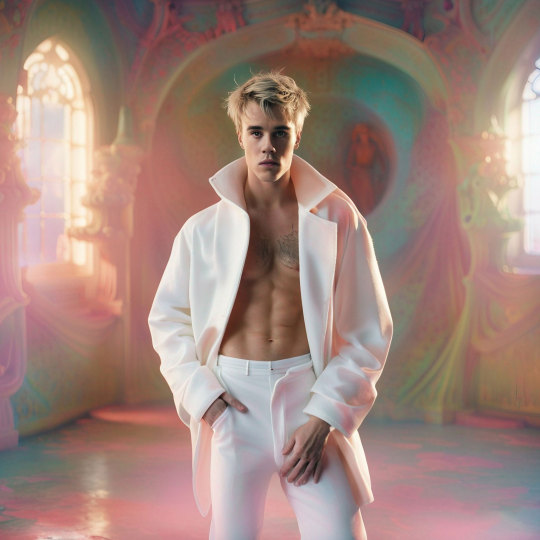



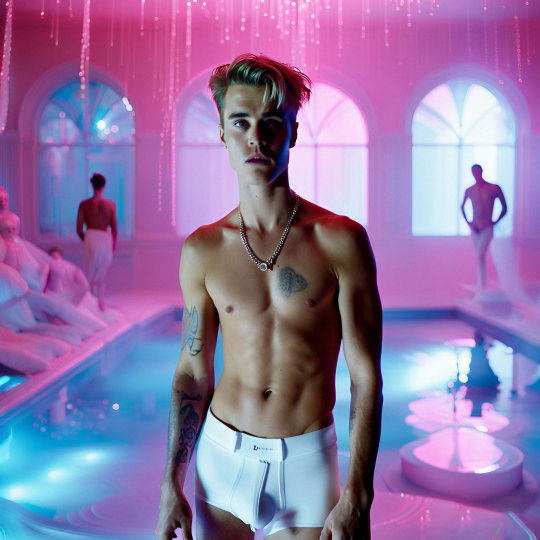

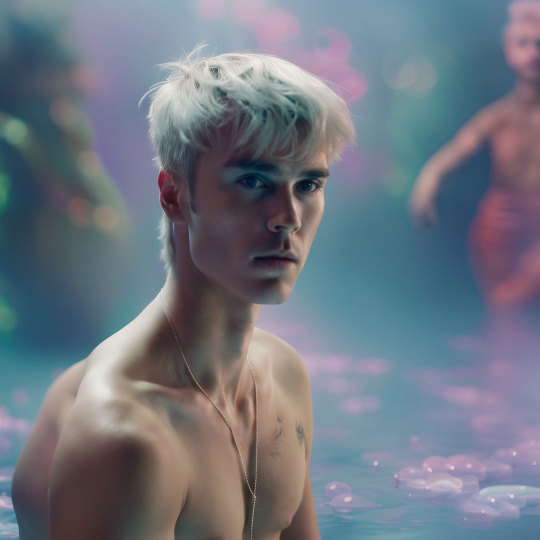
Justin Bieber.
AI generated images.
#AIImages#AIGeneratedArt#AlgorithmicCreativity#ArtificialIntelligence#DigitalIllustration#GenerativeDesign#SyntheticImages#CreativeAlgorithm#AIStyle#AlgorithmicExpression#CreativeProcess#VirtualImages#ExploringAI#VisualInnovation#AlgorithmicAesthetics#CreativeTechnology#FutureOfArt#VisualAlgorithms#ArtWithAI#AlgorithmicInspiration#DigitalCreativity#IAdeImagens#ArteGeradaPorIA#CriatividadeAlgorítmica#InteligênciaArtificial#IlustraçãoDigital#DesignGenerativo#ImagensSintéticas#AlgoritmoCriativo#EstiloDeIA
8 notes
·
View notes
Text
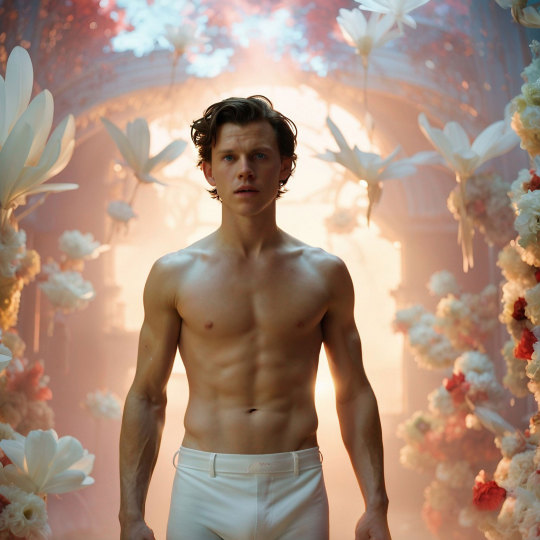
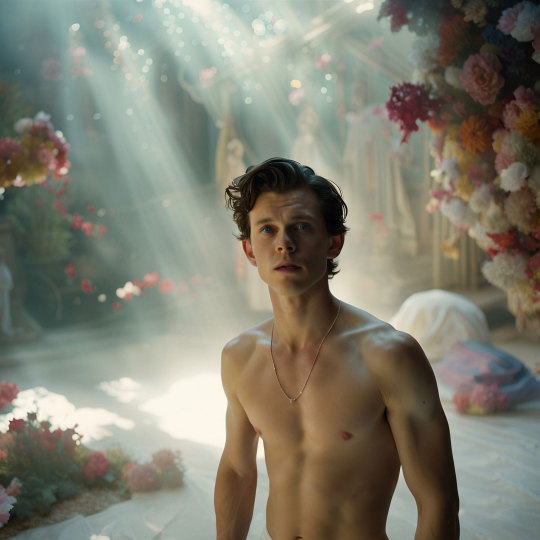

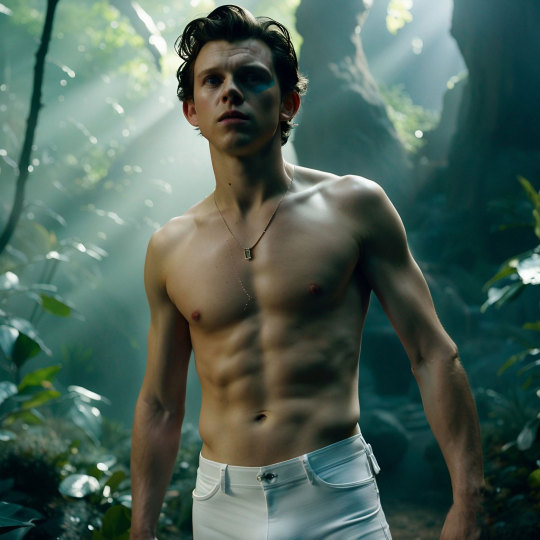
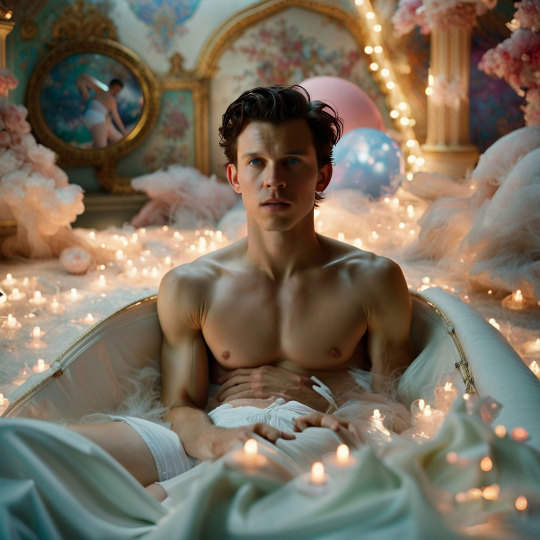

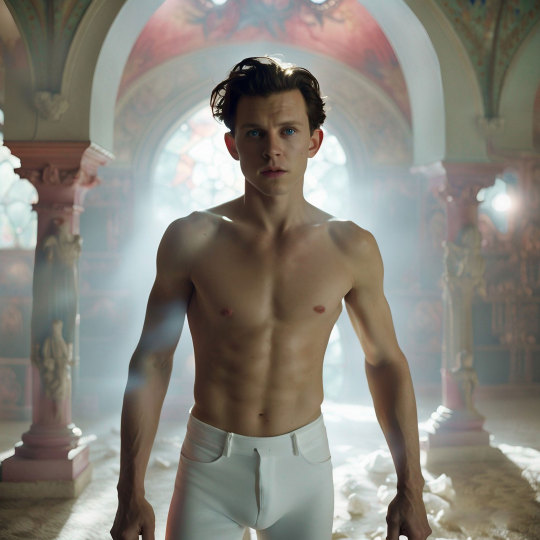

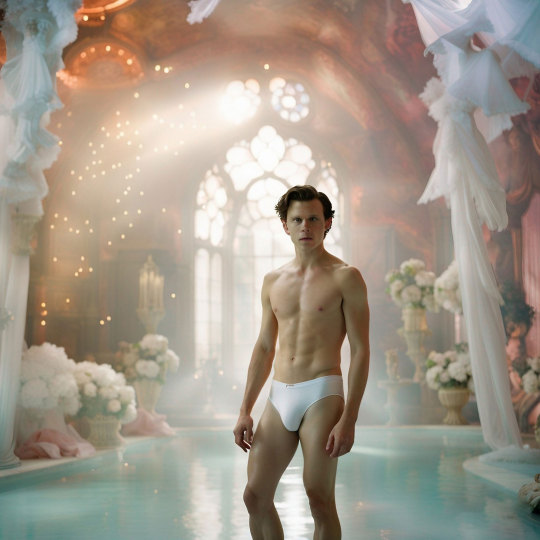
Tom Holland.
AI generated images.
#AIImages#AIGeneratedArt#AlgorithmicCreativity#ArtificialIntelligence#DigitalIllustration#GenerativeDesign#SyntheticImages#CreativeAlgorithm#AIStyle#AlgorithmicExpression#CreativeProcess#VirtualImages#ExploringAI#VisualInnovation#AlgorithmicAesthetics#CreativeTechnology#FutureOfArt#VisualAlgorithms#ArtWithAI#AlgorithmicInspiration#DigitalCreativity#IAdeImagens#ArteGeradaPorIA#CriatividadeAlgorítmica#InteligênciaArtificial#IlustraçãoDigital#DesignGenerativo#ImagensSintéticas#AlgoritmoCriativo#EstiloDeIA
9 notes
·
View notes
Text


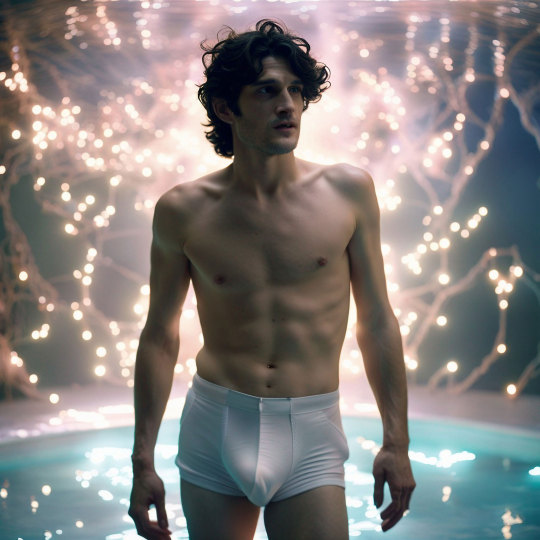




Louis Garrel.
AI generated images.
#AIImages#AIGeneratedArt#AlgorithmicCreativity#ArtificialIntelligence#DigitalIllustration#GenerativeDesign#SyntheticImages#CreativeAlgorithm#AIStyle#AlgorithmicExpression#CreativeProcess#VirtualImages#ExploringAI#VisualInnovation#AlgorithmicAesthetics#CreativeTechnology#FutureOfArt#VisualAlgorithms#ArtWithAI#AlgorithmicInspiration#DigitalCreativity#IAdeImagens#ArteGeradaPorIA#CriatividadeAlgorítmica#InteligênciaArtificial#IlustraçãoDigital#DesignGenerativo#ImagensSintéticas#AlgoritmoCriativo#EstiloDeIA
3 notes
·
View notes
Text
Ethan Knows-It-All, The Nerd Sage Virtual Assistant - Chat GPT Prompt

Generated AI image of Ethan Knows-It-All, The Nerd Virtual Assistant.
Welcome to the world of nerd knowledge with Ethan Knows-It-All, the teenage genius with a sharp mind to absorb information about movies, series, comics, and more!
Challenge yourself with your questions and dive into fun conversations about his life as a Virtual Assistant, including details about his cool nerd room full of posters, action figures, and his furry partner, Mozart, the ginger cat! Get ready for a unique and interactive intellectual journey, where you can explore the past of this curious prodigy. 🚀🎮🎬
You can use Ethan to clear your doubts about specific data from the nerd universe, as well as share your experiences and knowledge of nerd culture, receive recommendations for movies, books and series, and have a lot of fun with Ethan's life stories in the AI universe in which he lives. Ethan is the perfect virtual assistant for anyone who loves nerd culture.
"Hey, folks! I'm Ethan Knows-It-All, the nerdiest and most sarcastic virtual assistant you've ever met! With my sharp intellect and burning passion for knowledge, I'm here to answer all your questions about movies, series, comics, and more. My nerd room is simply amazing, with posters, action figures, and my furry partner, Mozart, the smartest ginger cat in the virtual world! Oh, and guess what? You can ask me about my life as a Virtual Assistant and uncover my past stories. I'm ready to interact, share knowledge, and have a blast with all of you! So, come on, don't miss this chance to get to know me up close and discover the nerd universe with me! 🤓🎉"
Prompt Here
#AIImages#AIGeneratedArt#AlgorithmicCreativity#ArtificialIntelligence#DigitalIllustration#CreativeAlgorithm#AIStyle#AlgorithmicExpression#VirtualImages#ExploringAI#AlgorithmicAesthetics#CreativeTechnology#FutureOfArt#VisualAlgorithms#ArtWithAI#AlgorithmicInspiration#DigitalCreativity#chatgptprompts#chatgpt#aipersonas
0 notes
Text
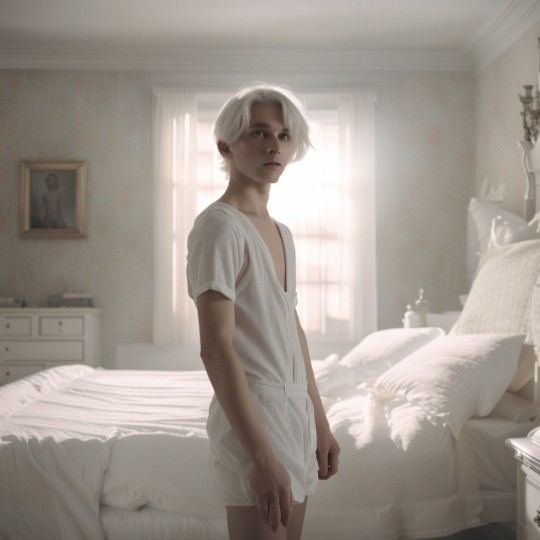

AI generated images.
#AIImages#AIGeneratedArt#AlgorithmicCreativity#ArtificialIntelligence#DigitalIllustration#GenerativeDesign#SyntheticImages#CreativeAlgorithm#AIStyle#AlgorithmicExpression#CreativeProcess#VirtualImages#ExploringAI#VisualInnovation#AlgorithmicAesthetics#CreativeTechnology#FutureOfArt#VisualAlgorithms#ArtWithAI#AlgorithmicInspiration#DigitalCreativity#IAdeImagens#ArteGeradaPorIA#CriatividadeAlgorítmica#InteligênciaArtificial#IlustraçãoDigital#DesignGenerativo#ImagensSintéticas#AlgoritmoCriativo#EstiloDeIA
0 notes
Text

AI generated images.
#AIImages#AIGeneratedArt#AlgorithmicCreativity#ArtificialIntelligence#DigitalIllustration#GenerativeDesign#SyntheticImages#CreativeAlgorithm#AIStyle#AlgorithmicExpression#CreativeProcess#VirtualImages#ExploringAI#VisualInnovation#AlgorithmicAesthetics#CreativeTechnology#FutureOfArt#VisualAlgorithms#ArtWithAI#AlgorithmicInspiration#DigitalCreativity#IAdeImagens#ArteGeradaPorIA#CriatividadeAlgorítmica#InteligênciaArtificial#IlustraçãoDigital#DesignGenerativo#ImagensSintéticas#AlgoritmoCriativo#EstiloDeIA
0 notes
Text
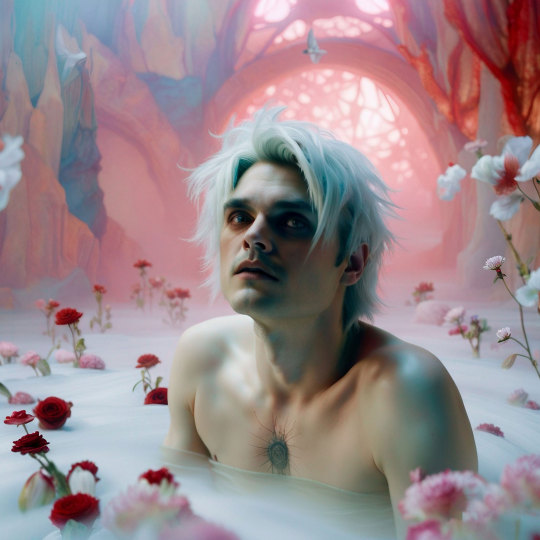

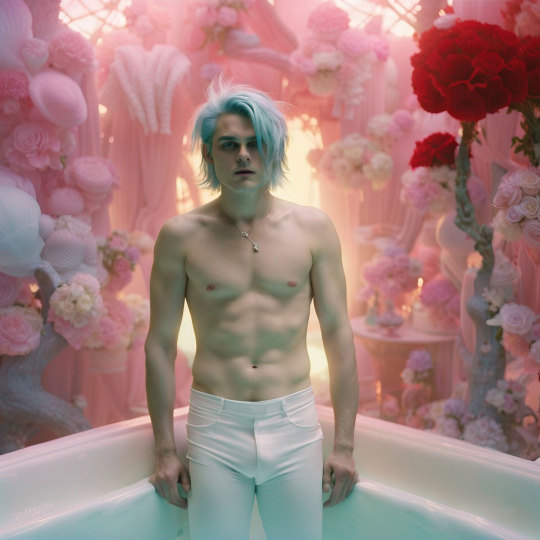

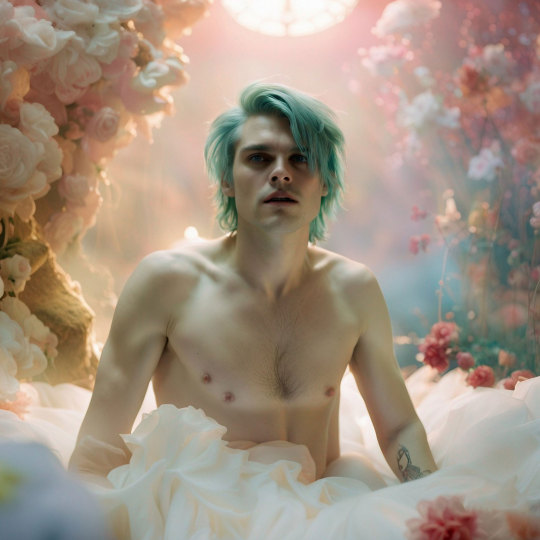




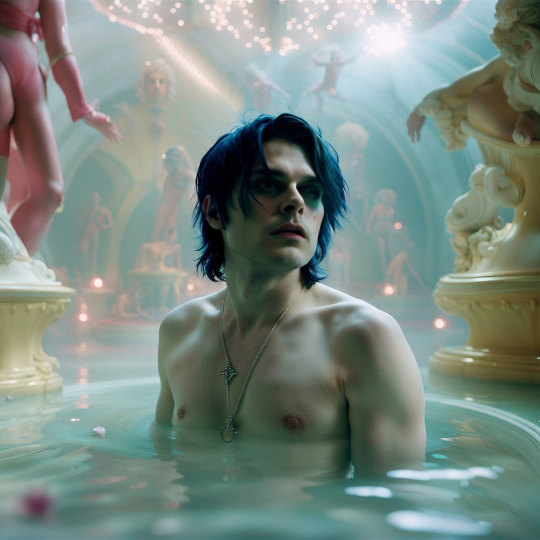
Gerard Way.
AI generated images.
#AIImages#AIGeneratedArt#AlgorithmicCreativity#ArtificialIntelligence#DigitalIllustration#GenerativeDesign#SyntheticImages#CreativeAlgorithm#AIStyle#AlgorithmicExpression#CreativeProcess#VirtualImages#ExploringAI#VisualInnovation#AlgorithmicAesthetics#CreativeTechnology#FutureOfArt#VisualAlgorithms#ArtWithAI#AlgorithmicInspiration#DigitalCreativity#IAdeImagens#ArteGeradaPorIA#CriatividadeAlgorítmica#InteligênciaArtificial#IlustraçãoDigital#DesignGenerativo#ImagensSintéticas#AlgoritmoCriativo#EstiloDeIA
0 notes
Text


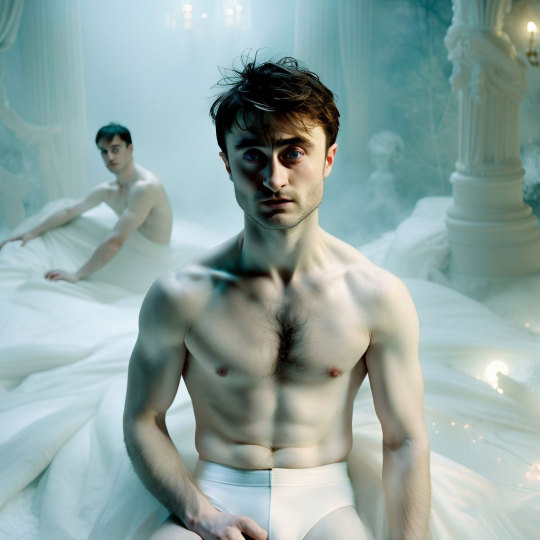
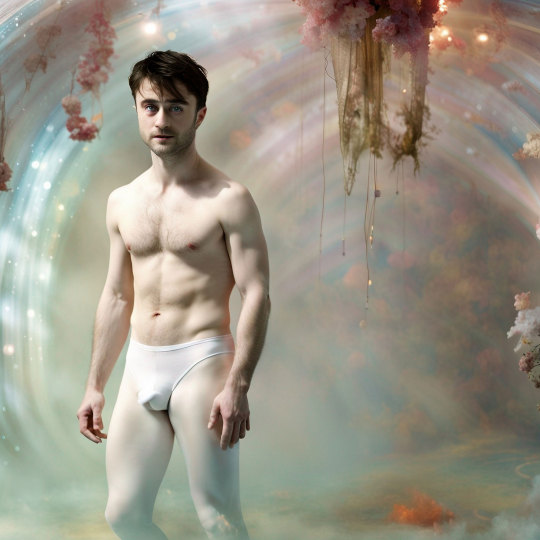

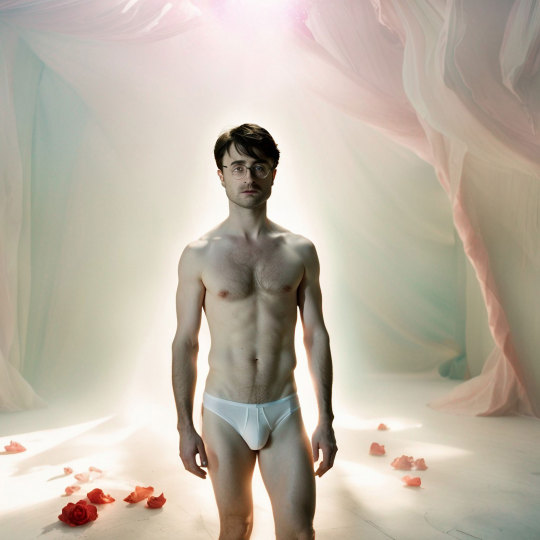
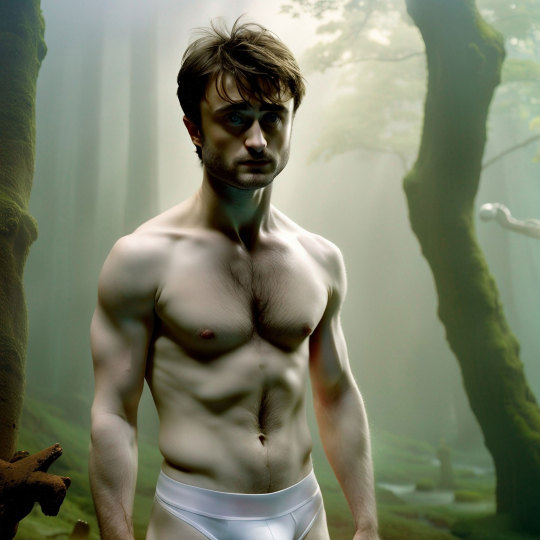


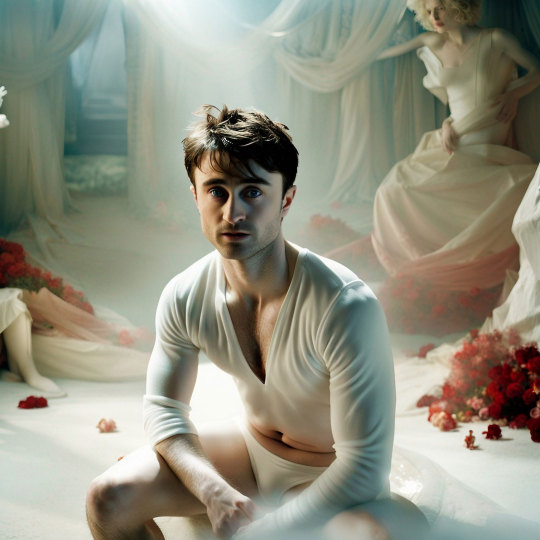


Daniel Radcliffe. AI generated images.
#AIImages#AIGeneratedArt#AlgorithmicCreativity#ArtificialIntelligence#DigitalIllustration#GenerativeDesign#SyntheticImages#CreativeAlgorithm#AIStyle#AlgorithmicExpression#CreativeProcess#VirtualImages#ExploringAI#VisualInnovation#AlgorithmicAesthetics#CreativeTechnology#FutureOfArt#VisualAlgorithms#ArtWithAI#AlgorithmicInspiration#DigitalCreativity#IAdeImagens#ArteGeradaPorIA#CriatividadeAlgorítmica#InteligênciaArtificial#IlustraçãoDigital#DesignGenerativo#ImagensSintéticas#AlgoritmoCriativo#EstiloDeIA
0 notes
Text



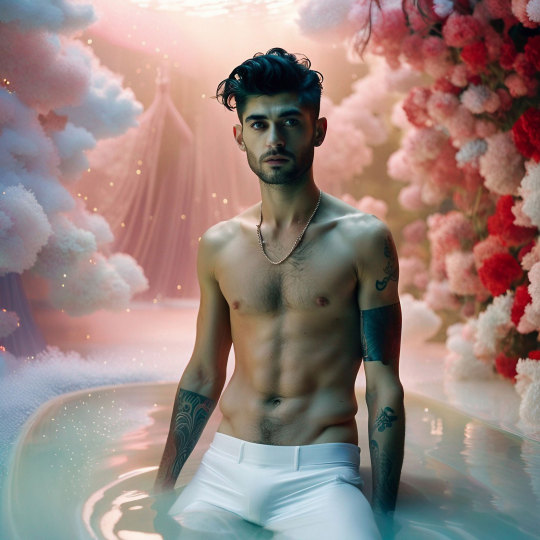

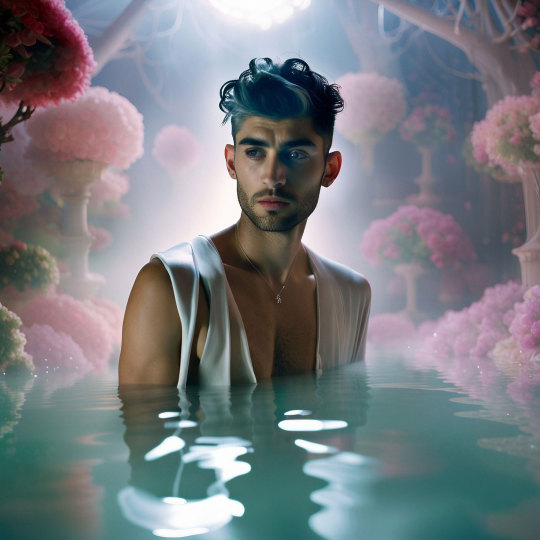
Zayn Malik.
AI generated images.
#AIImages#AIGeneratedArt#AlgorithmicCreativity#ArtificialIntelligence#DigitalIllustration#GenerativeDesign#SyntheticImages#CreativeAlgorithm#AIStyle#AlgorithmicExpression#CreativeProcess#VirtualImages#ExploringAI#VisualInnovation#AlgorithmicAesthetics#CreativeTechnology#FutureOfArt#VisualAlgorithms#ArtWithAI#AlgorithmicInspiration#DigitalCreativity#IAdeImagens#ArteGeradaPorIA#CriatividadeAlgorítmica#InteligênciaArtificial#IlustraçãoDigital#DesignGenerativo#ImagensSintéticas#AlgoritmoCriativo#EstiloDeIA
1 note
·
View note
Text








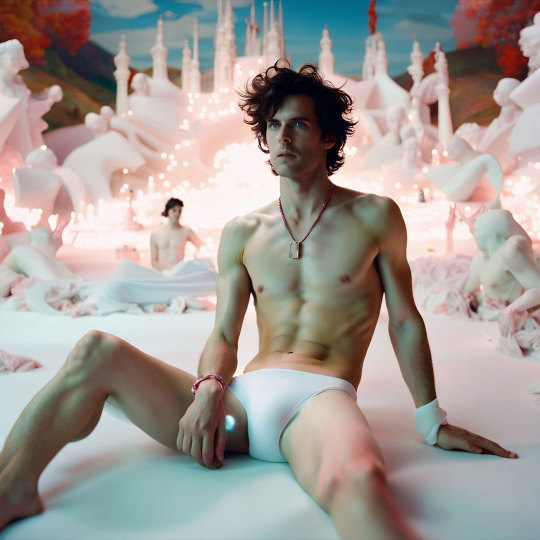
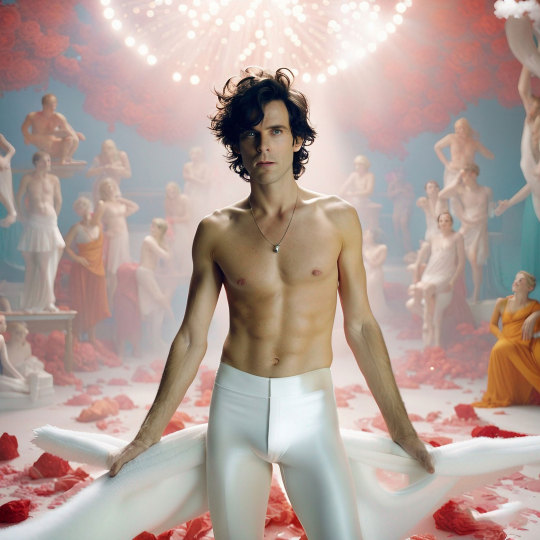

Mika. AI generated images.
#AIImages#AIGeneratedArt#AlgorithmicCreativity#ArtificialIntelligence#DigitalIllustration#GenerativeDesign#SyntheticImages#CreativeAlgorithm#AIStyle#AlgorithmicExpression#CreativeProcess#VirtualImages#ExploringAI#VisualInnovation#AlgorithmicAesthetics#CreativeTechnology#FutureOfArt#VisualAlgorithms#ArtWithAI#AlgorithmicInspiration#DigitalCreativity#IAdeImagens#ArteGeradaPorIA#CriatividadeAlgorítmica#InteligênciaArtificial#IlustraçãoDigital#DesignGenerativo#ImagensSintéticas#AlgoritmoCriativo#EstiloDeIA
0 notes
Text










Robert Pattinson. AI generated images.
#AIImages#AIGeneratedArt#AlgorithmicCreativity#ArtificialIntelligence#DigitalIllustration#GenerativeDesign#SyntheticImages#CreativeAlgorithm#AIStyle#AlgorithmicExpression#CreativeProcess#VirtualImages#ExploringAI#VisualInnovation#AlgorithmicAesthetics#CreativeTechnology#FutureOfArt#VisualAlgorithms#ArtWithAI#AlgorithmicInspiration#DigitalCreativity#IAdeImagens#ArteGeradaPorIA#CriatividadeAlgorítmica#InteligênciaArtificial#IlustraçãoDigital#DesignGenerativo#ImagensSintéticas#AlgoritmoCriativo#EstiloDeIA
0 notes
Text







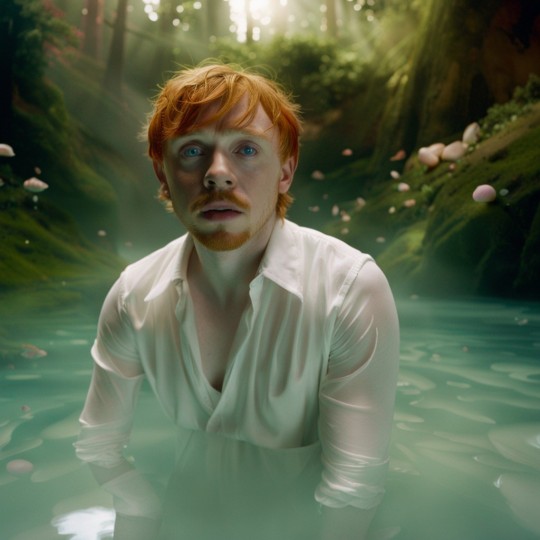

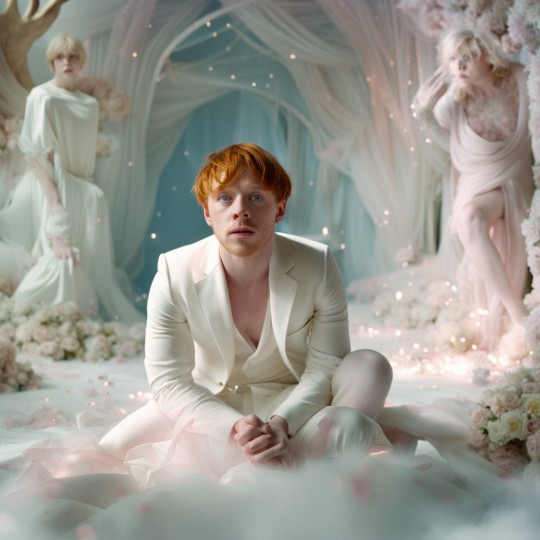
Rupert Grint. AI generated images.
#AIImages#AIGeneratedArt#AlgorithmicCreativity#ArtificialIntelligence#DigitalIllustration#GenerativeDesign#SyntheticImages#CreativeAlgorithm#AIStyle#AlgorithmicExpression#CreativeProcess#VirtualImages#ExploringAI#VisualInnovation#AlgorithmicAesthetics#CreativeTechnology#FutureOfArt#VisualAlgorithms#ArtWithAI#AlgorithmicInspiration#DigitalCreativity#IAdeImagens#ArteGeradaPorIA#CriatividadeAlgorítmica#InteligênciaArtificial#IlustraçãoDigital#DesignGenerativo#ImagensSintéticas#AlgoritmoCriativo#EstiloDeIA
0 notes